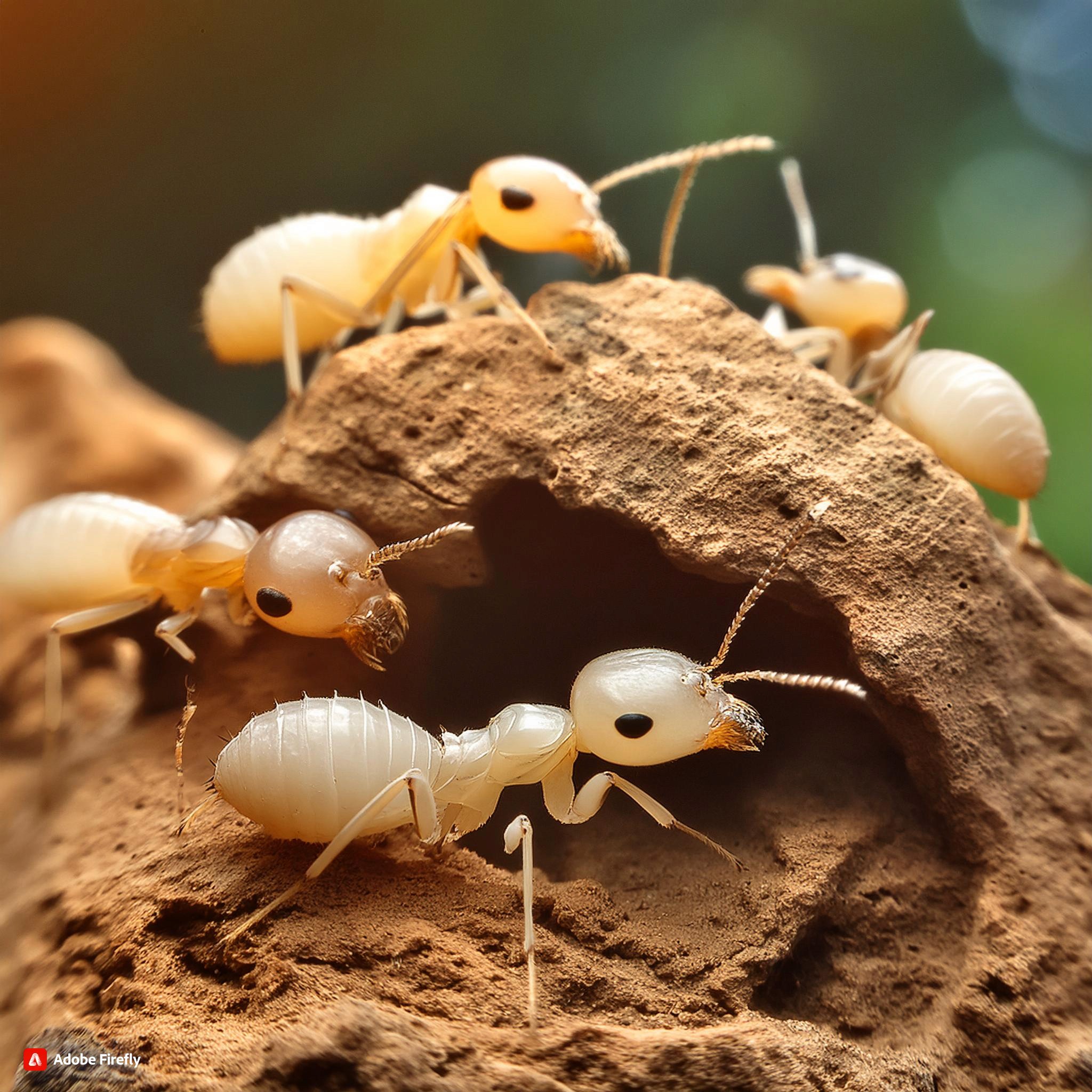
Reading Time • 2-3 min
Termite behavior, signs of infestation, and practical tips for prevention.
Termites are notorious for their ability to silently wreak havoc on homes, causing extensive damage before homeowners even realize they have an infestation. Understanding termite behavior and knowing the signs of an infestation are crucial for early detection and effective treatment. Here’s what you need to know about termites and how to protect your home:
1. Know Your Enemy: Understanding Termite Behavior Termites are social insects that live in colonies and feed on cellulose materials, primarily wood. They can be categorized into three main types:
Subterranean Termites: These termites build their colonies underground and access homes through mud tubes.
Drywood Termites: These termites infest dry wood and do not require contact with soil.
Dampwood Termites: These termites prefer damp or decaying wood and are less common in homes.
2. Signs of Termite Infestation Early detection of termite infestations can save you from costly repairs. Look out for these signs:
Mud Tubes: Subterranean termites create mud tubes on walls or foundations to travel between their colony and food source.
Wood Damage: Hollow-sounding or visibly damaged wood, particularly near windows, doors, and baseboards.
Discarded Wings: Swarming termites shed their wings, leaving behind piles of discarded wings near windowsills or light sources.
Frass: Termite droppings, known as frass, resemble tiny pellets and may indicate active infestation.
3. Prevention Tips to Protect Your Home Preventing termites begins with making your home less attractive to them. Follow these prevention tips:
Eliminate Moisture: Repair leaky faucets, gutters, and downspouts to reduce moisture buildup, which attracts termites.
Inspect Wood: Regularly inspect wooden structures for signs of damage or infestation. Replace or treat damaged wood promptly.
Keep Firewood Away: Store firewood away from your home and above ground level.
Maintain Ventilation: Ensure adequate ventilation in crawl spaces and attics to reduce humidity levels.
4. Professional Inspection and Treatment Regular inspections by a licensed pest control professional are essential for detecting termites early. A professional can recommend treatment options tailored to your home’s needs and provide ongoing monitoring to prevent future infestations.
5. When to Seek Professional Help If you suspect a termite infestation or notice any signs mentioned above, it's crucial to act quickly:
Contact D&C Killer Bees Extermination for a thorough termite inspection and treatment plan.
Avoid DIY treatments, as they may not effectively eliminate the entire termite colony.
By understanding termite behavior and implementing preventive measures, you can safeguard your home against costly termite damage. Stay vigilant and proactive to maintain a termite-free environment for years to come.
Still have questions?
If you couldn’t find an answer to your question feel free to contact us.